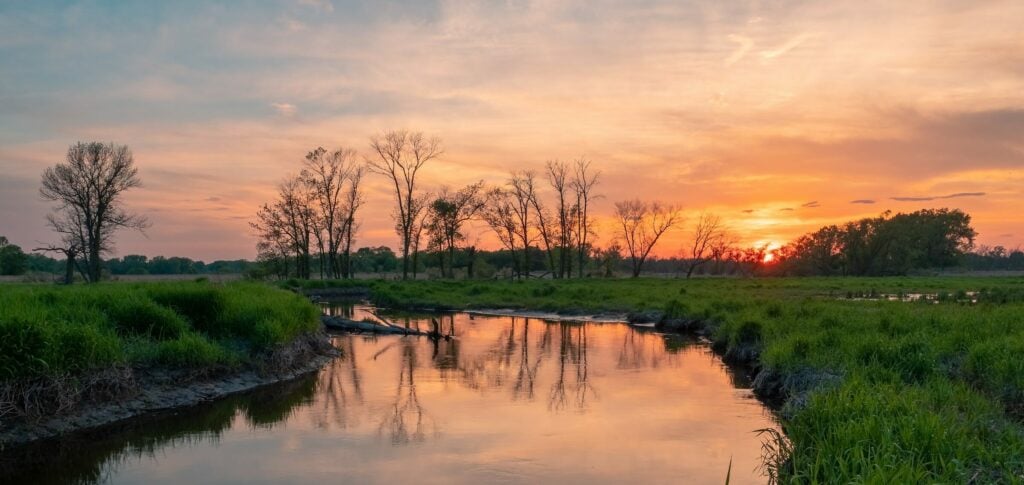💧 World Water Week 2022
World Water Week 2022 (World Water Week 2022🇬🇧) starts this Tuesday (23) in Stockholm, Sweden.
ADVERTISING
Held every year since 1991, the event – organized on a non-profit basis by the Stockholm International Water Institute (SIWI) – is the premier event on global water issues.
World Water Week brings together experts with the aim of discussing new ways of managing water and tackling humanity's biggest challenges: from food security and health to agriculture, technology, biodiversity and climate.
The big theme for this year’s World Water Week is “Seeing the invisible: the value of water".
ADVERTISING
Within this subject, the sessions will be grouped under three thematic titles:
- The value of water for people and development
- The financial and economic value of water
- The value of water for nature and the climate
Amid the reality faced by several countries around the planet – which are suffering from the effects of the climate crisis, experiencing droughts and torrential rains – we cannot fail to discuss the true value of water for society.
You can follow the event through online platform. Check it out!
ADVERTISING
🌱 Pesticides in Pantanal waters
O “Technical Report – Pesticides in the Pantanal” pointed out that 8 types of pesticides were found in water samples from the quilombola communities of Jejum and Chumbo, in Poconé (MT), a city considered the capital of the Pantanal of Mato Grosso. The study was published by the NGO Federation of Social Assistance Bodies (Fase), in partnership with the Institute of Public Health (ISC) and the Center for Environmental Studies and Occupational Health at the Federal University of Mato Grosso (Neast/UFMT).
The document also attests that pesticides were detected in settler communities in two other municipalities.
Do you know what a settlement is/how it works? It is a set of agricultural units installed by the National Institute of Colonization and Agrarian Reform (Incra) where there originally existed a rural property without social function, that is, that, despite having an owner, it was not used properly as provided for in Article 5 of the Federal Constitutionsystem. (Politicize!) Each of these units – called plots or lots – is intended for a family of farmer or rural worker without the economic means to acquire a rural property. The benefiting family must reside and explore the lot, carrying out various productive activitiessystem. (INCRA)
ADVERTISING
In total, therefore, 10 types of pesticides would have been found – with a high frequency of detection (in more than one type of sample) – in the 4 communities.
The report also indicates that 5 of the types of pesticides found were banned in European Union countries, Australia and Canada, as they pose a risk to human health and the environment.
Mato Grosso is the Brazilian state that uses the most toxic substances in agriculture, having recorded the use of 142.738,855 kg of active pesticide ingredientssystem. (PHASE)
ADVERTISING
🍃 Project aims to conserve wildlife and investigate pathogens
A project that investigates sanitary and epidemiological aspects of animals received by the Ibama-AM Wild Animal Screening Center, in Manaus, aims to combine wildlife conservation work with the investigation of pathogens that cause diseases of animal originsystem. (Fiocruz)
It has been carried out since 2019 and is the result of a partnership between the Leônidas & Maria Deane Institute (Fiocruz Amazônia) and the Brazilian Institute for the Environment and Renewable Natural Resources (Ibama). In addition to funding from the Amazonas State Research Support Foundation (Fapeam).
“Our interest is public health and we access biological material to understand the prevalence of some viral and parasitic diseases that affect the wild population. These are animals that come from various parts of the State, which allows us to map prevalence”, explains veterinarian Alessandra Nava – research coordinator – in a note to Fiocruz.
“The project is a two-way street, because it allows us to have broad knowledge about the pathogens circulating in the wild fauna of the Amazon biome, and helps Cetas in the management of animals, with important information about their health, such as knowing about the parasitic load or pathogen they have or don’t have”, adds Nava.
Curto Verde is a daily summary of what you need to know about the environment, sustainability and other topics linked to our survival and that of the planet.
(🚥): may require registration and/or signature
(🇬🇧): content in English
(*): content in other languages is translated by Google Tradutor



